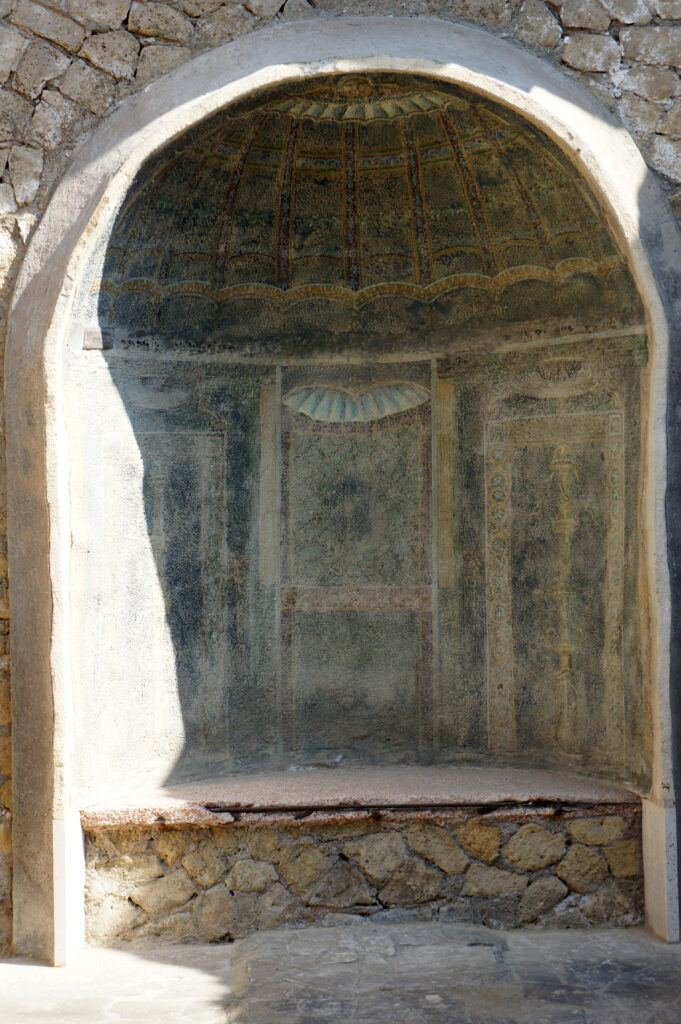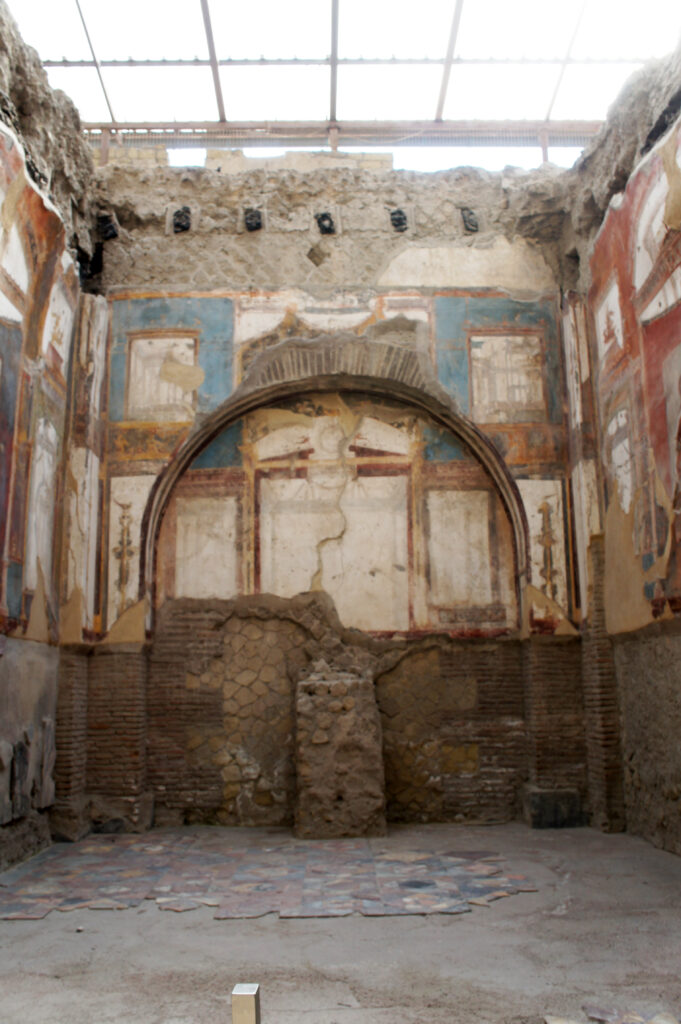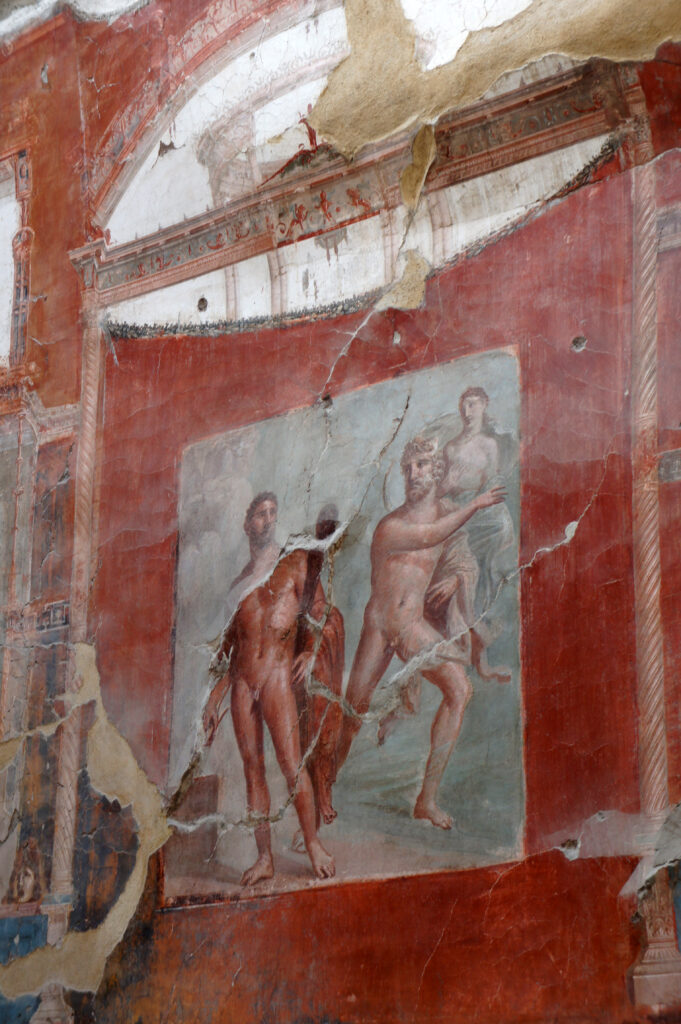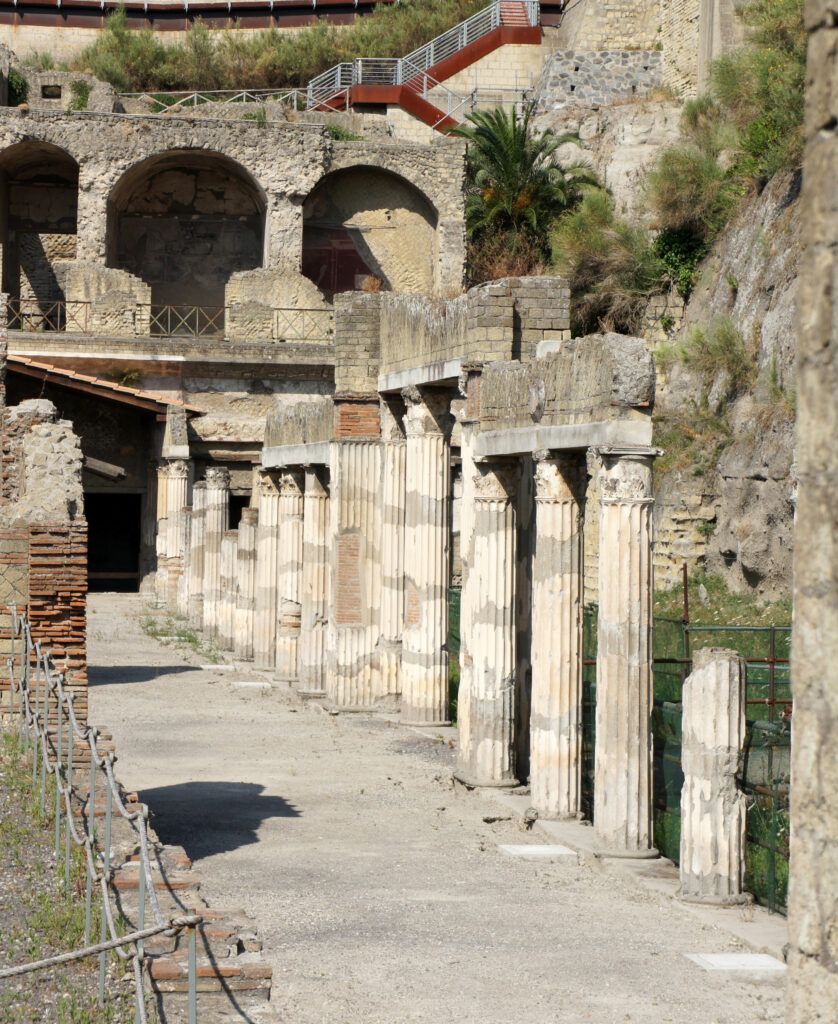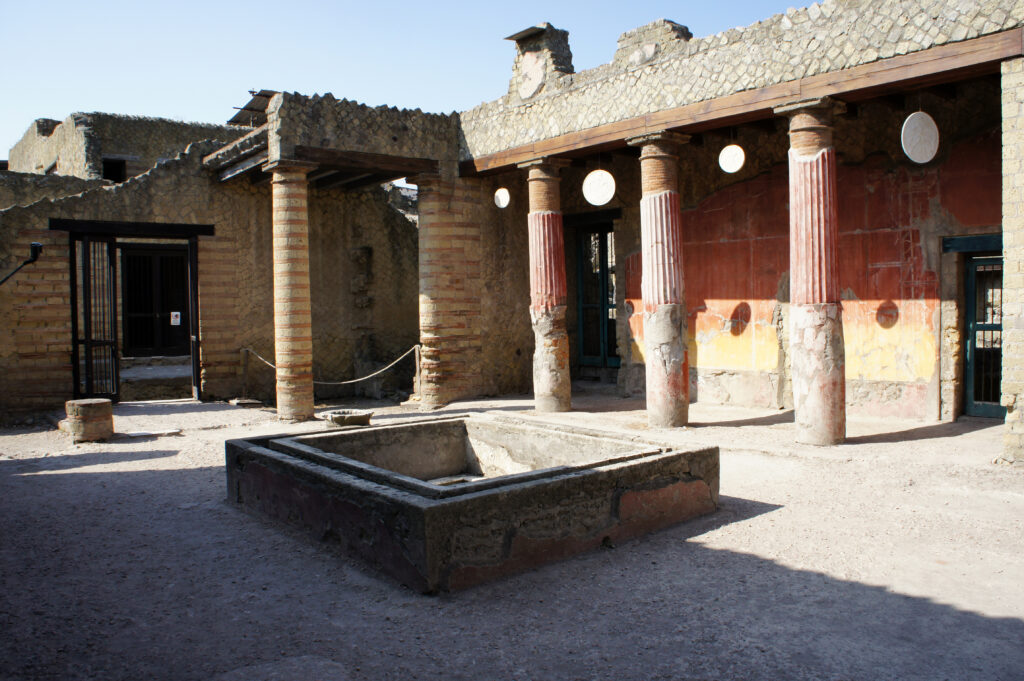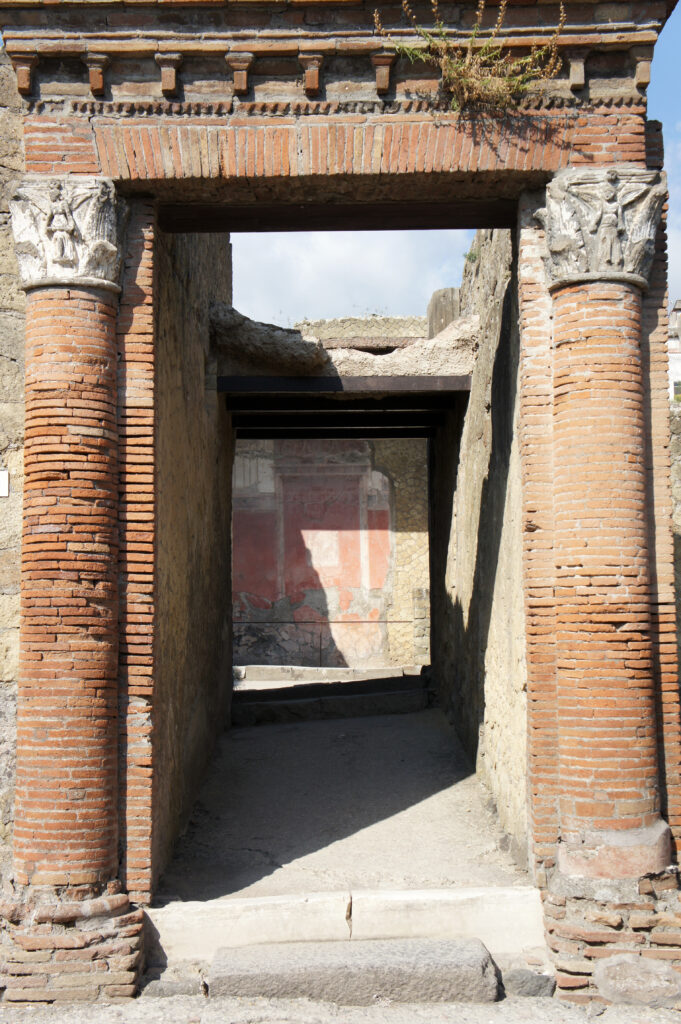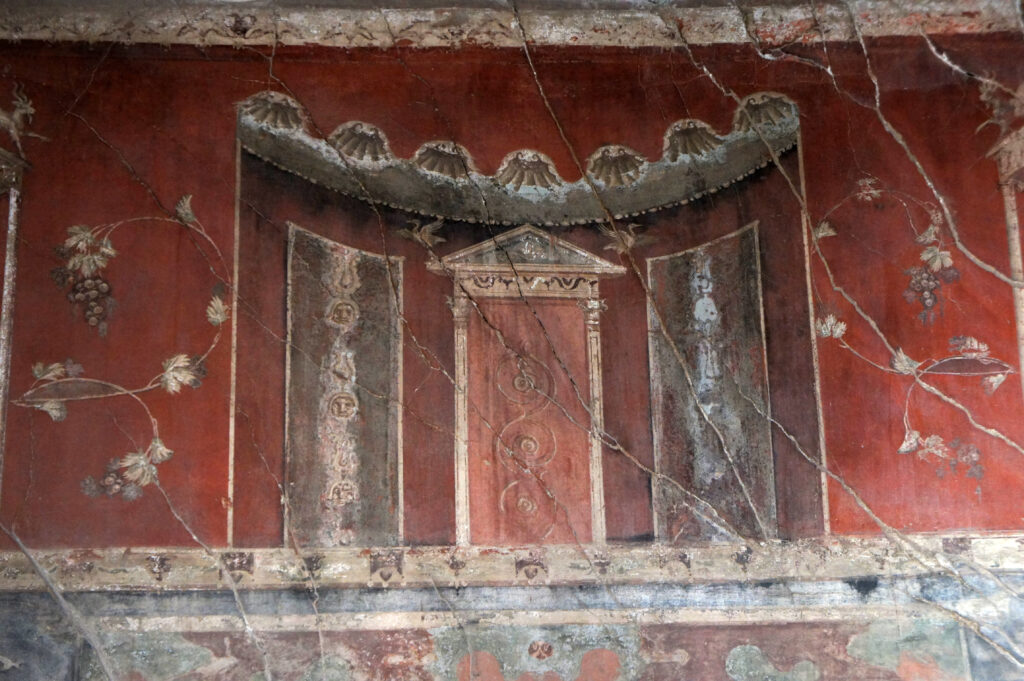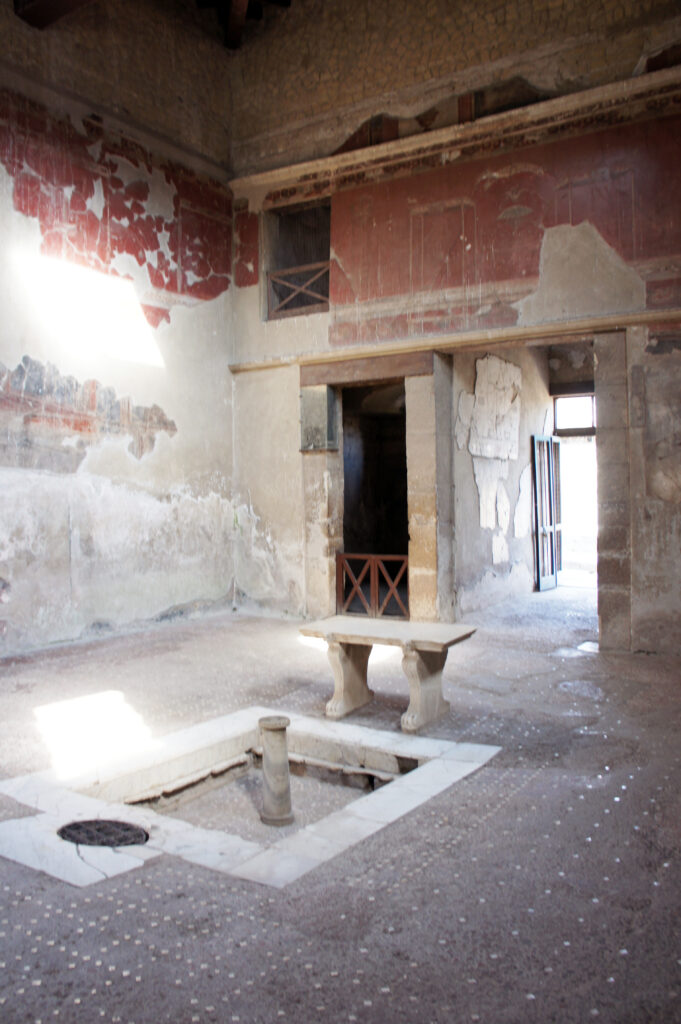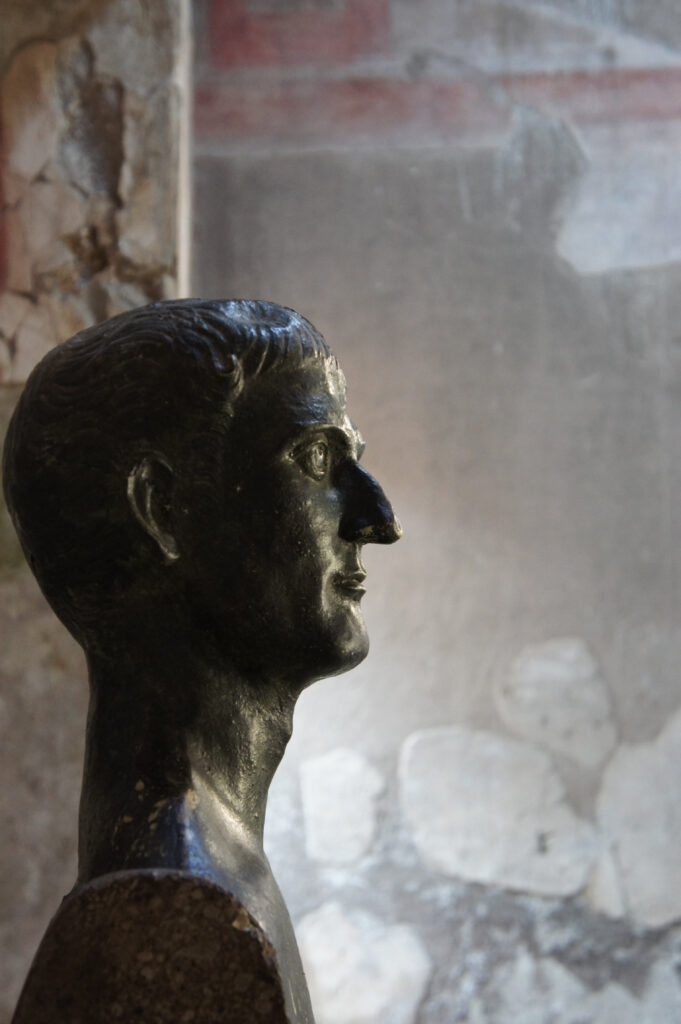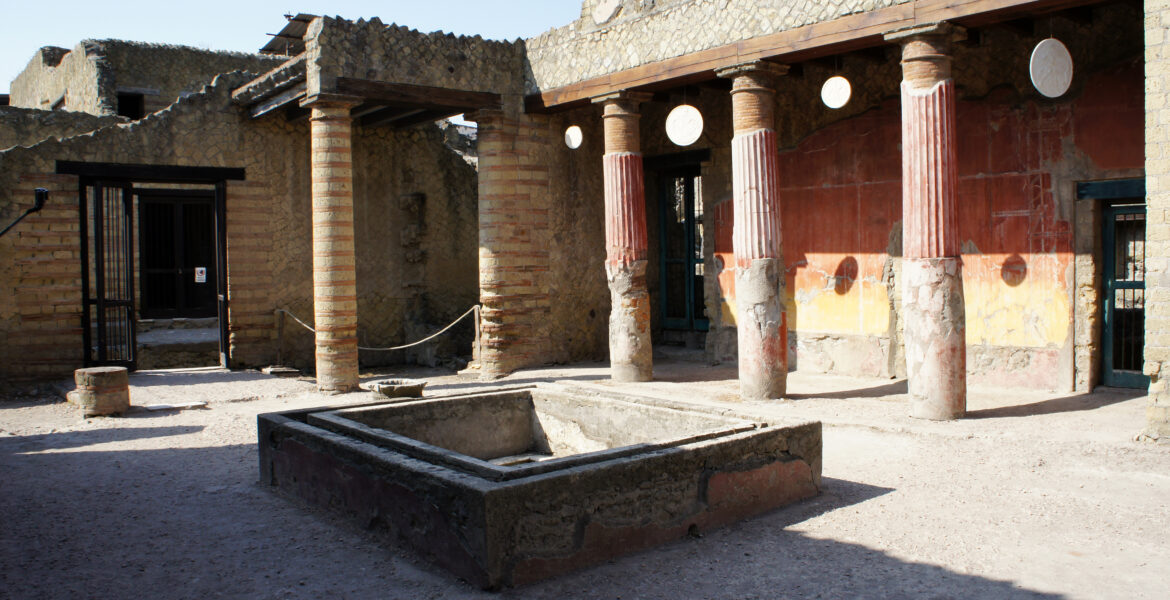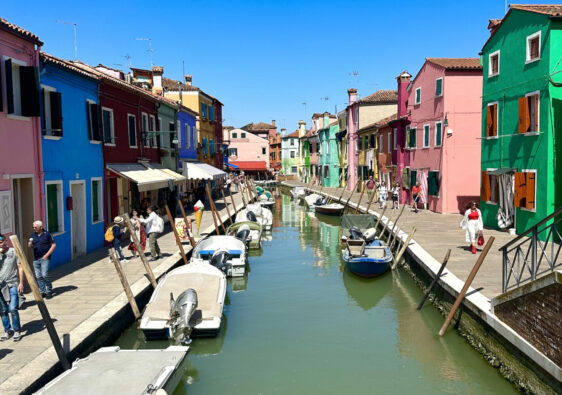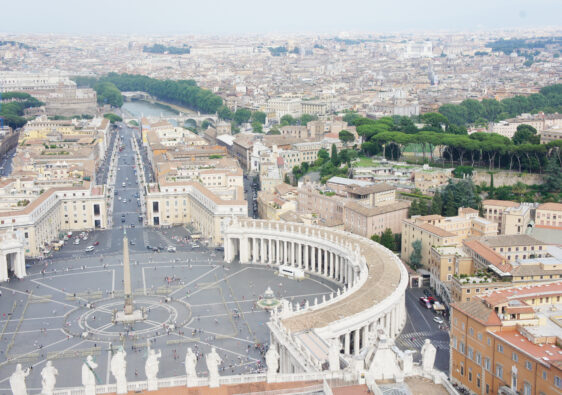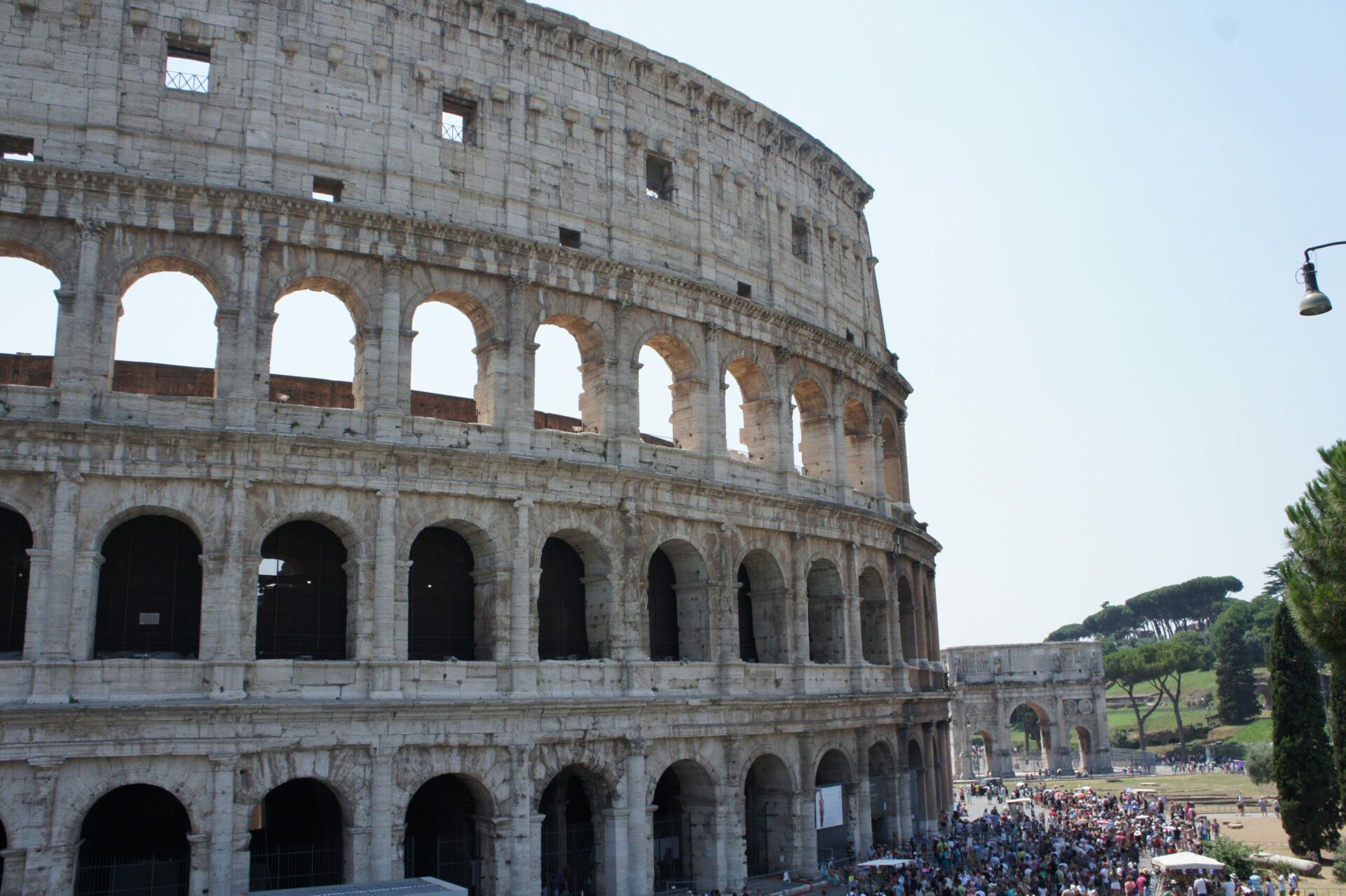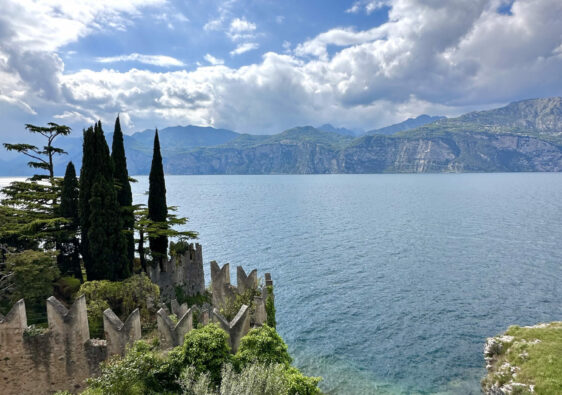✍️ This article was originally published on 30 September 2022, it was updated on 21 November 2024.
This city was buried, just like Pompeii, during the eruption of Mount Vesuvius in 79 AD.
Upon arriving at Herculaneum, you’ll be surprised by two things. Firstly, the surrounding modern constructions. Herculaneum is relatively small and encircled by modern houses and buildings! The contrast upon arrival is striking, and one wonders how and why they built so close to such a fragile monument, which was designated a UNESCO World Heritage Site in 1997.
Secondly, the preservation of the city! When you think of a volcanic eruption, you imagine visiting ruins. However, you’ll be amazed to discover houses, numerous almost intact columns, entire streets, and many well-preserved frescoes. There are also numerous sculptures.
Unlike Pompeii, where the city was covered by ash, Herculaneum was engulfed by a mudflow. This flow spread throughout the city, engulfing houses and inhabitants. Everything that burned in Pompeii, such as wooden structures, doors, or stairs, is still present in Herculaneum.
Visiting evokes strong emotions because this preservation has frozen the city in time, allowing one to easily imagine the drama and horror caused by this mudflow.
We recommend bringing a good French guidebook to understand the visit and the different houses you’ll explore. Nothing is provided at the entrance, and plan for a good half-day to fully appreciate the site.
